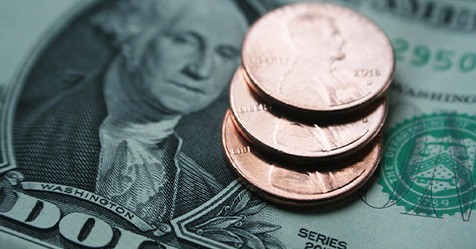A poorly equipped and maintained restroom can create a lasting and damaging impression. Whether the result is bad employee morale or unhappy tenants, unsanitary conditions can have a major impact on your business.
In fact, keeping your restroom clean and sanitary not only helps keep tenants satisfied, it also goes a long way in keeping pests away. Pests such as flies, rodents, and cockroaches have a nose for the odors and grime that can accumulate in poorly maintained restrooms—they’re drawn to the same smells that drive customers away. And since water, debris, and odors are readily available in restrooms, they are one of the most common places for pest activity.
For this reason, your facility’s throne room deserves some royal attention to detail. By starting from the ground up, you can maintain a clean, fresh-smelling restroom and proactively prevent pests at the same time.
When it comes to maintaining a bathroom, be sure you pay strict attention to the following hot spots.
The Floor
All pests need access to these basic components: food, water, and harborage. Unfortunately, your restroom can provide all three. The standing water and odors on the floor surrounding drains happen to be particularly attractive to a wide variety of flying and crawling insects.
Here are some techniques for getting rid of offensive odors and keeping all bathroom drains pristine:
- Be mindful when cleaning restrooms with wet mops or water-filled buckets. The water left behind from these cleaning items can create a breeding ground for pests, and you don’t want to provide them with a free drink.
- Pay attention to the moisture in and around drains. Because of their U-shape, dry drains may actually emit sewer odors that are attractive to pests, while wet drains can promote breeding. It’s important to find a balance by taking extensive action to give internal plumbing a thorough cleaning on a routine basis. To prevent drains from emitting odors and encouraging infestations, regularly pour water down the drain. You can also use a drain insert that has a rubber elbow on it, which can help prevent odors—or pests—from coming up through the drain.
- Consider using an organic, professional cleaning solution to break down tough stains and grime on floors and around drains. Organic cleaners use naturally occurring enzymes and beneficial bacteria to degrade stains and grime, which can help reduce the presence of drain flies.
- Replace any broken grout or tiles, as debris or food sources can build up in cracks on the floor.
Toilets and Plumbing
Unsightly and unflushed toilets can emit odors that attract pests, such as cockroaches and flies, not to mention they can disgust your tenants and staff. Be sure to monitor stalls, toilet fixtures, and urinals regularly. Routinely flush toilets and thoroughly clean stall areas.
Consider installing the following devices to help minimize pest activity and take some of the burden of daily maintenance off your staff:
- Automatic Flushers: Using infrared, user-detection devices, you can reduce sewer gas buildup and help prevent offensive and unsanitary bathroom conditions because, let’s face it, some people just don’t flush. Automatic flushers can also reduce the risk of cross-contamination, as they can eliminate the spread of germs caused by touching fixtures. Additionally, no one is kicking or abusing the handles, so they help protect your fixtures.
- Automatic Cleaners: These devices use powerful cleaning formulas to help reduce bacteria buildup and prevent stains, scaling, and odors. You also can save money on janitorial expenses because they require less regular maintenance and inspection.
The Faucets and Sinks
Dripping faucets and leaky sinks can create excess water in your restroom—and even the smallest amount can keep pests alive. In particular, carpenter ants are often sighted around sinks or bathroom fixtures, so be sure to pay close attention to the sink area.
Here are some tips for faucets and sinks that can help keep pests out of the picture:
- Fix any faulty sinks and faucets to prevent leaks.
- Don’t forget about the area below sink counters. These areas can collect water and spills from leaky pipes or drains.
- Seal all cracks and crevices around bathroom fixtures, sinks, and plumbing penetrations to prevent pests from taking up shelter in wall voids.
The Trash
In addition to the previously mentioned areas, trash bins can also cause significant concerns within a restroom. Here are a few additional tips that can help you dial in your pest-control efforts:
- Line all trash cans to prevent leaks or residue buildup, and use tight-fitting lids to keep pests out and reduce odors that may attract pests.
- Wash down trash cans when possible to remove any residual stains or grime.
- Make sure to empty trash cans when full and at least once a day.
The Air
Even if you can’t smell an odor, pests can. Simply masking an odor is very different from neutralizing the odor and stopping the source of a smell that may be drawing pests inside in search of food or water. Instead, consider the following odor solutions:
- Odor Neutralizers: These all-natural, nontoxic products can alter odor-producing molecules. Odor neutralizers eliminate odors right at the source rather than masking them temporarily. You can use these in both indoor and outdoor dumpsters and even in trash chutes within your walls.
- Restroom Units: You’ve probably seen wall-mounted restroom air fresheners before. Many of these units automatically dispense odor-neutralizing fragrances that break down large, malodorous molecules into smaller, odor-neutral molecules.
- Air Fresheners: While masking agents such as air fresheners are not effective for long-term odor control, they can help to minimize unpleasant odors in the short term. Plug-in air fresheners with refillable cartridges can complement your ongoing sanitation and odor control efforts.
Talk with your tenants about restroom maintenance in their own units, and continue to remind them about the importance of a clean bathroom. An open line of communication can help to catch any pest problems before they get out of control.




